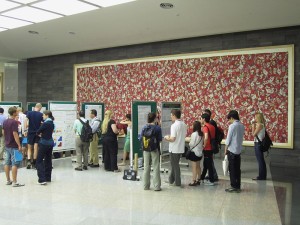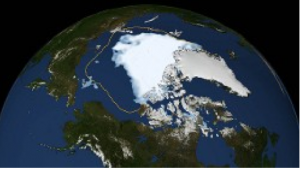Between 24th and 28th June, an international meeting on statistical climatology (IMSC) was held in Jeju Island, Republic of Korea. The meeting is one of the largest in the field and is held every third year. Well over 200 researchers participated, including three from the Division of Atmospheric Sciences. The research field itself is very wide, covering several climate research topics which involve the use of statistical methods and their application to (often) large/complicated datasets used in climate research. As a general description, “The aim of IMSC is to promote good statistical practice in the atmospheric and climate sciences and to maintain and enhance the lines of communication between the atmospheric and statistical science communities.”
The Earth’s climate system is very complicated, involving myriads of processes many of which are poorly known. However, climate research is not only about to understand the underlying processes. The analysis of existing data also has several issues related to it, involving related expertise and experience. This is emphasized by the ever-growing amount of geodata, comprising both observations and model simulations. Nowadays, it has become common for research projects to freely distribute the produced data for all interested users who then can exploit it for their personal research purposes. In this way, the data developers can also get more feedback from the data users and the outcome eventually has benefits to both parties. Indeed, research methods used in natural sciences are fundamentally more data-oriented today than a few decades ago. While progress in science also requires production of new data, for many applications there already exists a wealth of data which is far from being comprehensively analyzed.
As climate in any specific place can eventually be described as averaged weather, the conventional variables familiar from everyday weather forecasts (whether observed or modelled: surface temperature, precipitation, wind speed, humidity, …) have also a very important role in climate research and in any applications related to it. This is emphasized by the fact that these surface variables are the most meaningful for most of the climate data users, in their own right and as an input for impact studies. Some of the most important questions to ask by anyone planning to apply any adaptive measures in order to prepare for changing climatic conditions are:
“How much is it likely for temperature and precipitation to change at my location during the 21st century?” “What will happen to precipitation intensity in the future?” “How sensitive is my crop to droughts and will their frequency increase?” “How will river discharges change and what are the related uncertainty intervals?” “How important it actually is to get the future climate simulations right for my application?” Indeed, societal interface is very close to many of the applications in the field – many sectors are sensitive to climate and weather. Without the field of applied climatology, much of the precious scientific basic research about process understanding would not be translated at all for numerous societal applications. This happens through climate predictions done with global/regional climate models: the overarching aim in large parts of geoscientific research is to improve future climate predictions by studying the actual processes and eventually implementing them as a part of a climate model.
The simulations of climate models are distributed to the users by some means, which is far from being a straightforward copy-and-paste activity. Many of the problems have no simple answer, but still desperately need to be assessed as they have a large importance in climate prediction. An honest scientific interpretation of the future climate predictions requires understanding of relevant processes affecting climate in any specific place (defined possibly by the user), statistical knowledge, and multidisciplinary interest from the people working at the science-society-policy interface. All of this emphasizes the importance of diverse research environment and knowledge that can integrate and condense information into better products and simultaneously facilitate adaptive decisions of the end-users by offering decent decision-support advice and products for them.
We cannot just build our fancy climate models indefinitely, but we also have to use them in practice. The impact-related research on the division helps climate data users to apply climate predictions better for their problems and therefore eventually facilitate their adaptive decisions. The importance of climate services is evermore growing, emphasizing the need to develop good practices and guidance for interpreting and using climate data. Without this kind of research, the interface between the climate science community and actual decision makers will deteriorate. Whatever impacts will be caused by changing climate, estimating them also involves the use of climate models. As a science community, we need to have credible methods and tools to be able to serve users and the wider society.
Jussi S. Ylhäisi
Jouni Räisänen
Olle Räty
Climate research group




